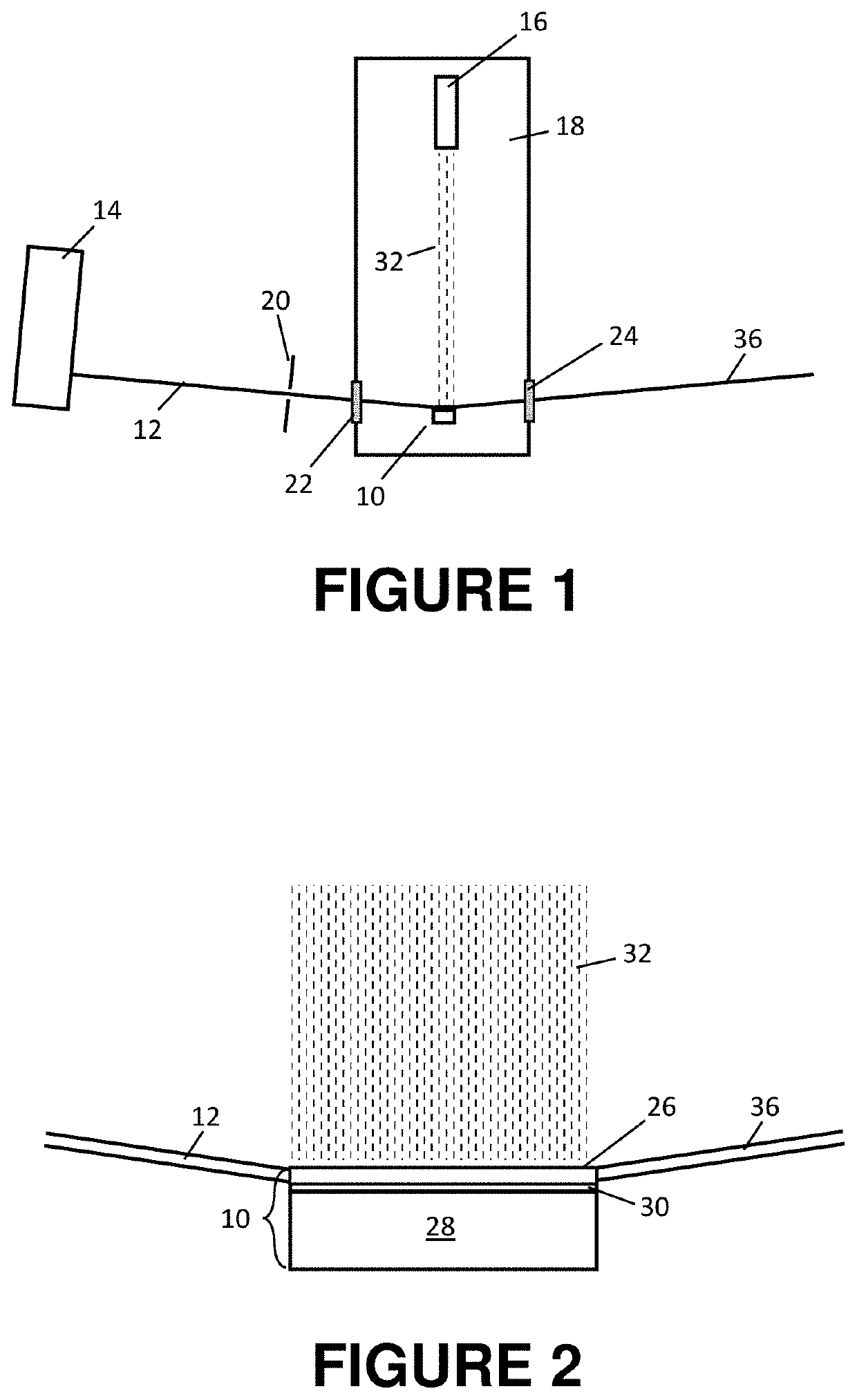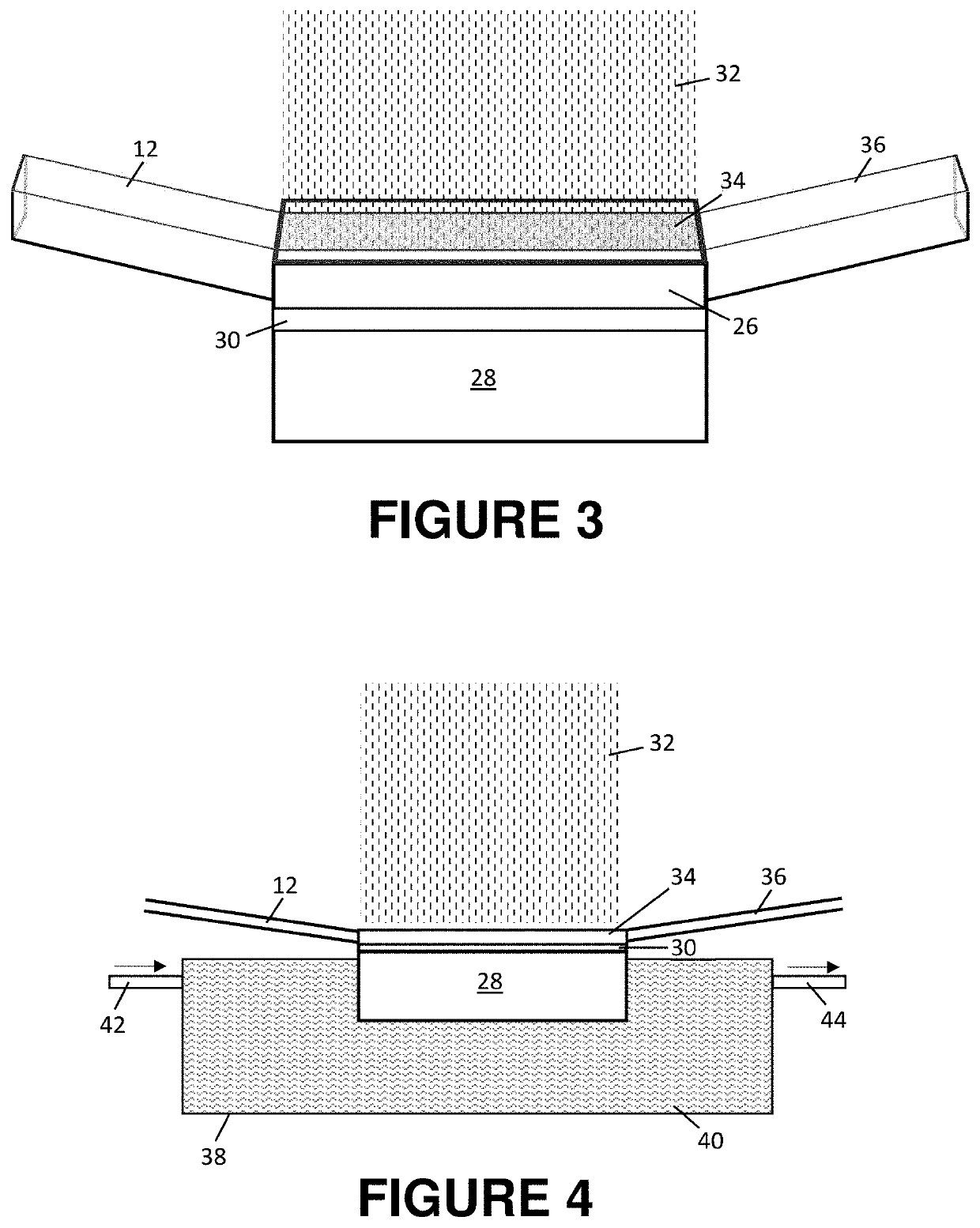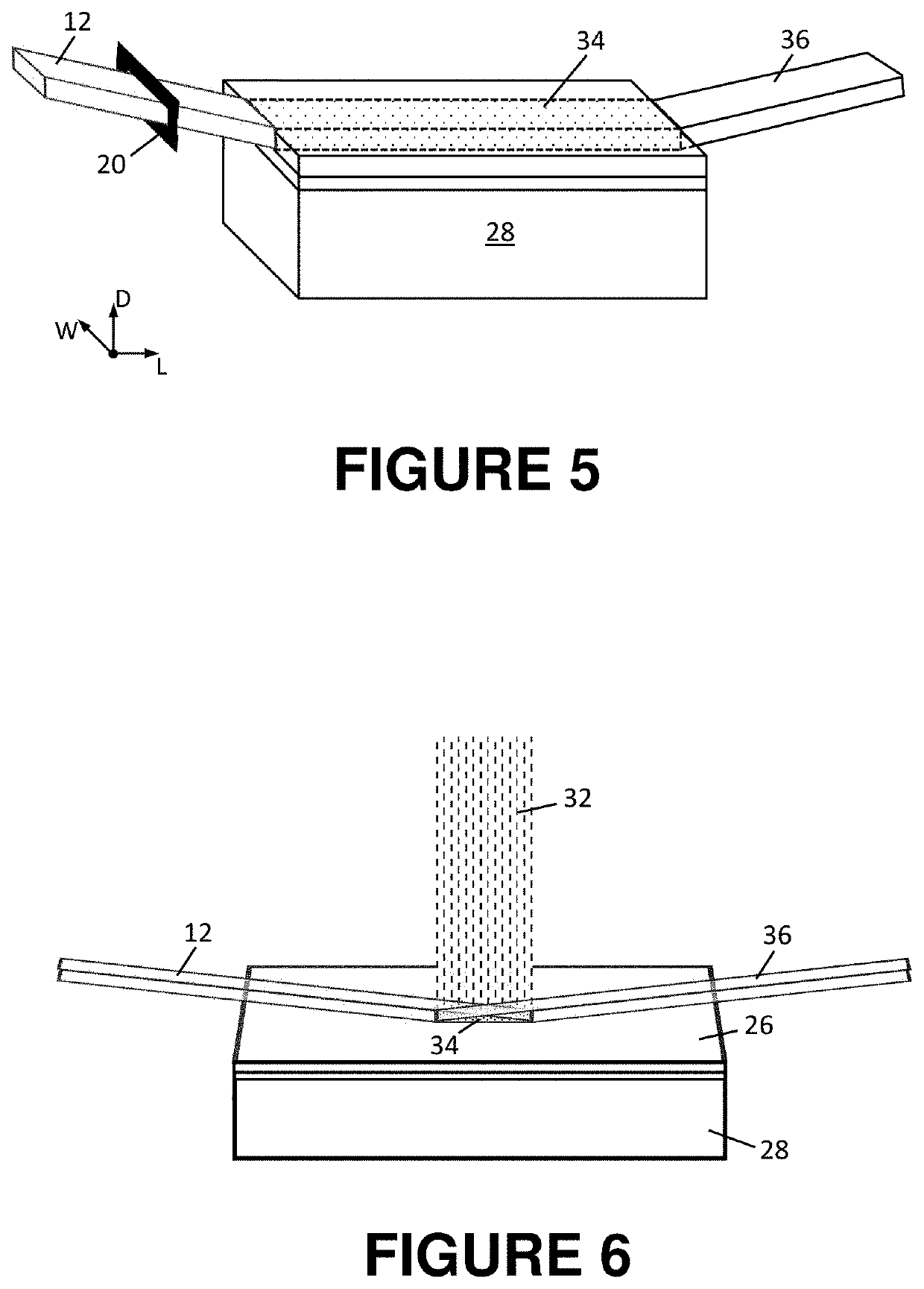Stimulated X-ray emission source with crystalline resonance cavity
- Summary
- Abstract
- Description
- Claims
- Application Information
AI Technical Summary
Benefits of technology
Problems solved by technology
Method used
Image
Examples
Embodiment Construction
[0017]Shown in FIG. 1 is a cross-sectional schematic view of an X-ray emission source according to the present invention. The source relies on stimulated emission of coherent X-ray radiation from an anode structure 10 having a crystalline target anode. In the exemplary embodiment, the anode is copper (Cu), molybdenum (Mo) or Silver (Ag), as the emission wavelengths from these materials are commonly used in X-ray applications, but those skilled in the art will understand that other crystalline materials may be used as well.
[0018]An X-ray beam 12 is directed onto the anode from a microfocus X-ray tube 14 (also referred to as the “drive tube”). The drive tube is chosen such that the anode material in the drive tube is the same as that of target anode material, so as to provide wavelength matching between the kα radiation of the drive tube and the emission modes of the anode target. The interaction of the X-ray beam 12 with the anode induces an X-ray standing wave, known as the Borrmann...
PUM
 Login to View More
Login to View More Abstract
Description
Claims
Application Information
 Login to View More
Login to View More - R&D
- Intellectual Property
- Life Sciences
- Materials
- Tech Scout
- Unparalleled Data Quality
- Higher Quality Content
- 60% Fewer Hallucinations
Browse by: Latest US Patents, China's latest patents, Technical Efficacy Thesaurus, Application Domain, Technology Topic, Popular Technical Reports.
© 2025 PatSnap. All rights reserved.Legal|Privacy policy|Modern Slavery Act Transparency Statement|Sitemap|About US| Contact US: help@patsnap.com



